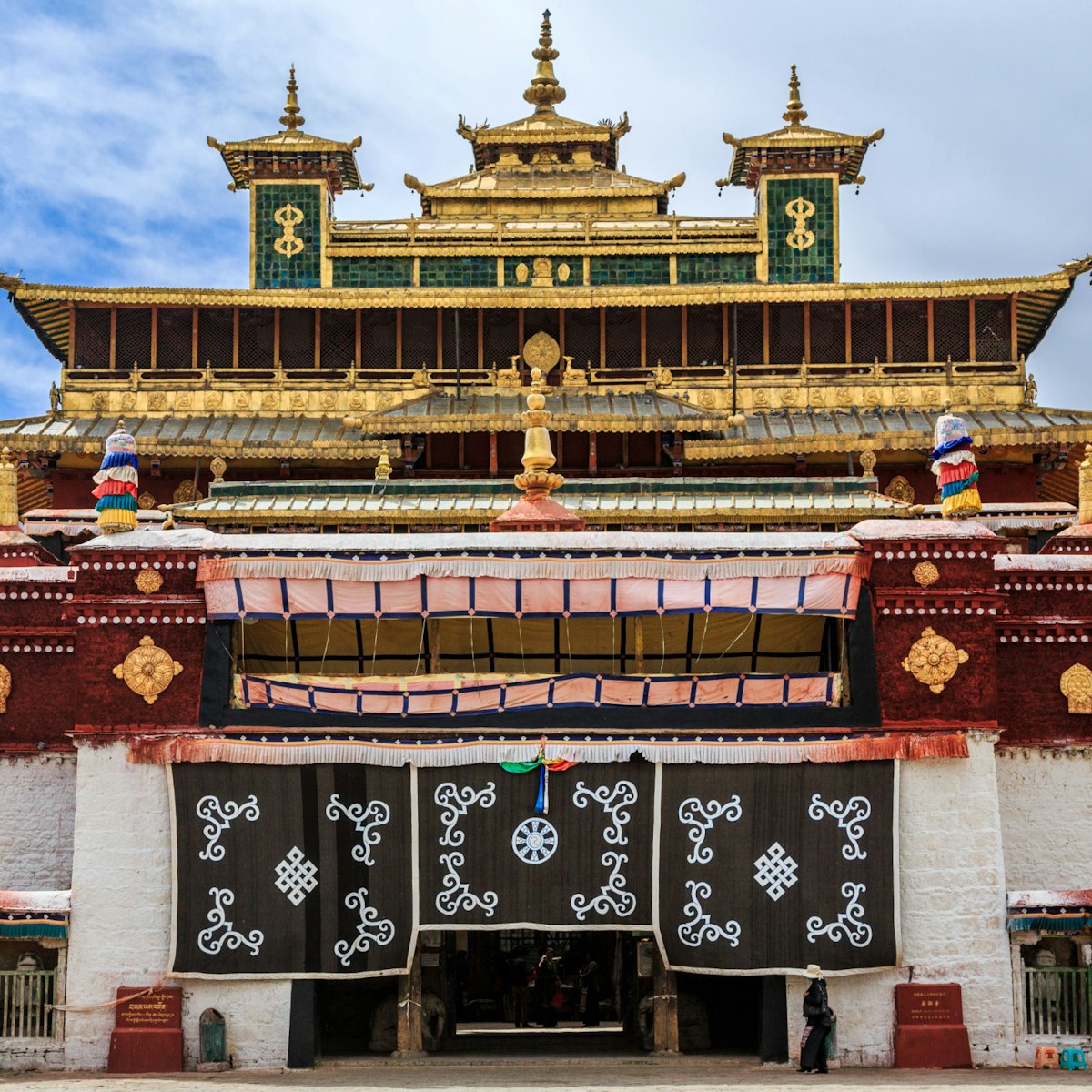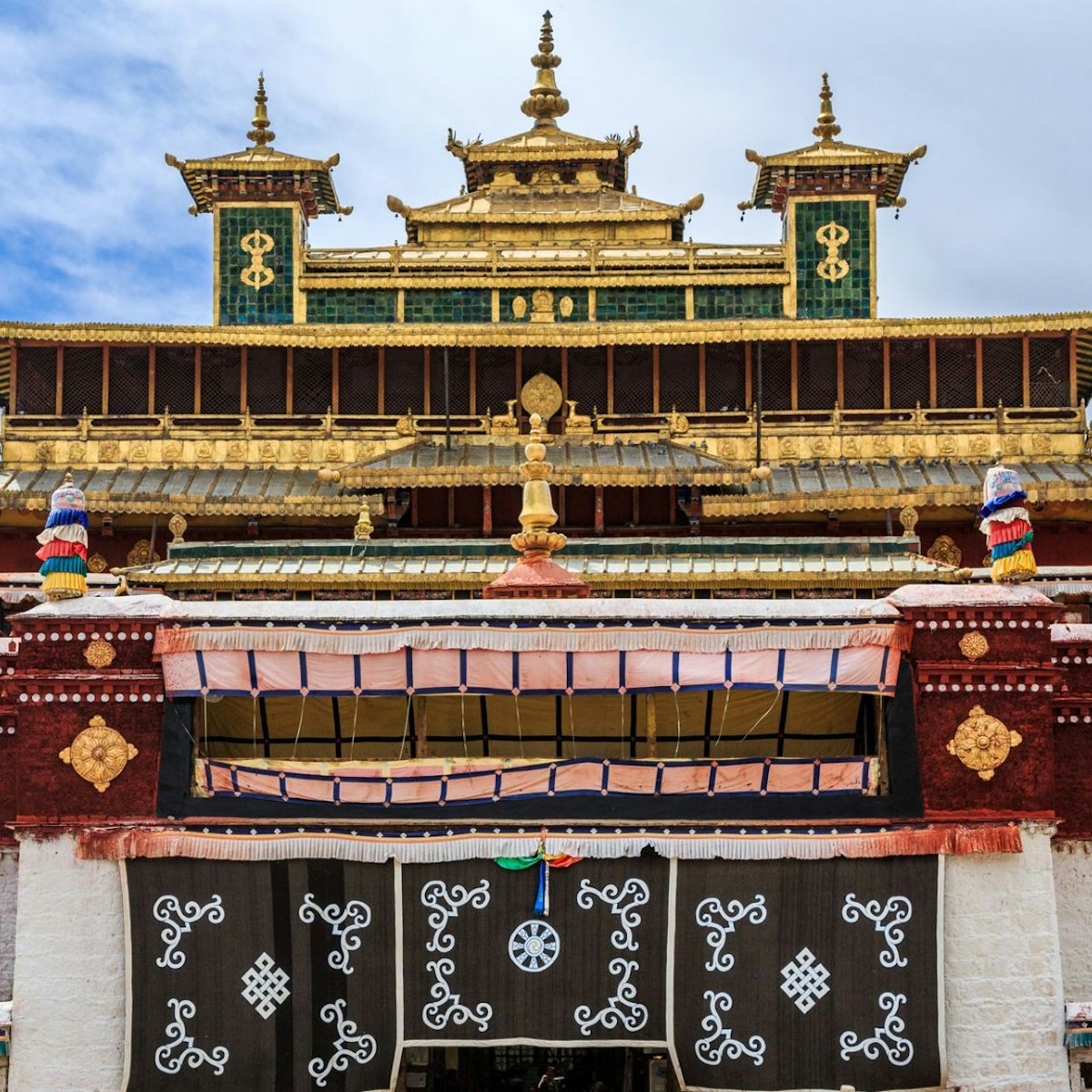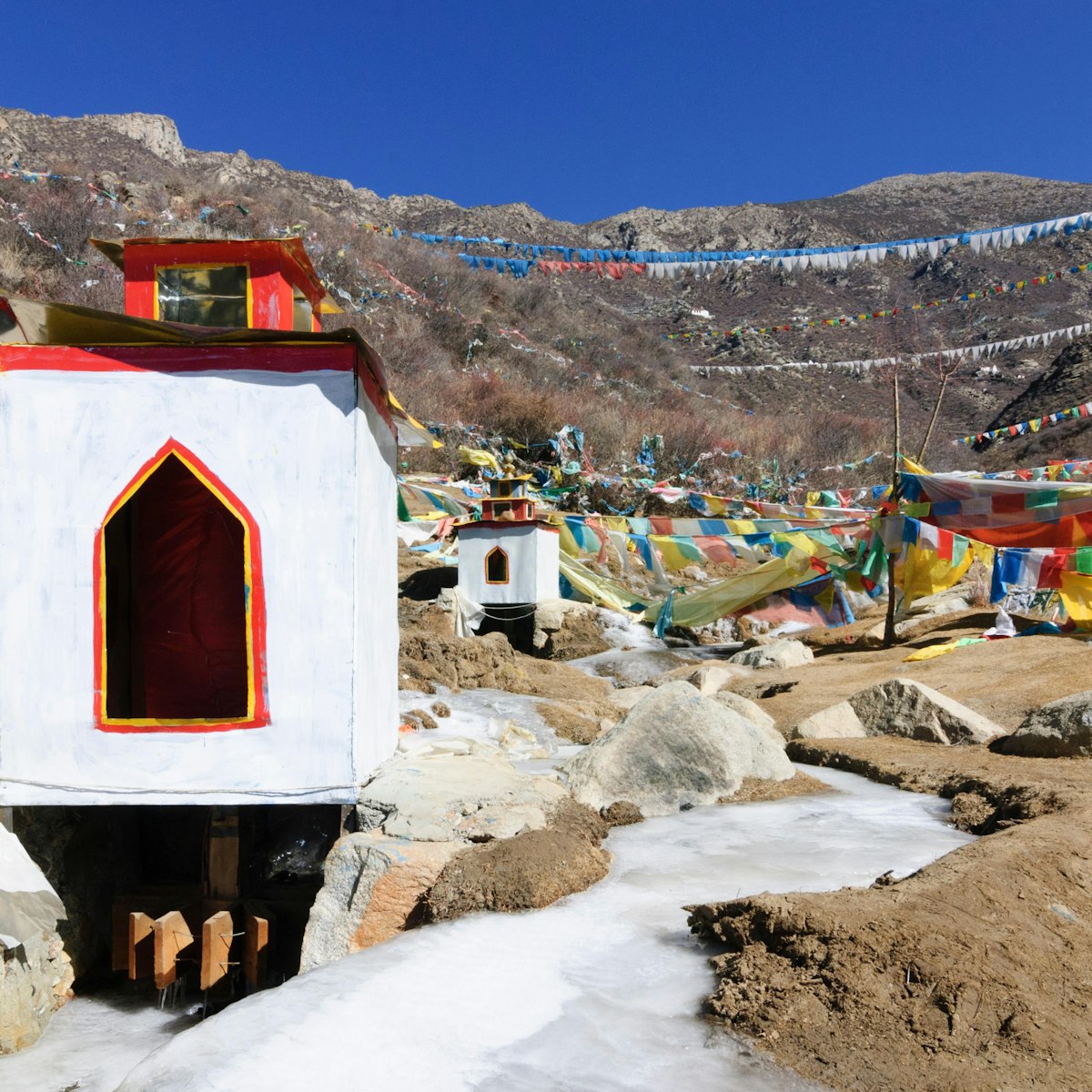A fine, tapering finger of a structure that sprouts from a craggy ridge overlooking the patchwork fields of the Yarlung Valley, Yumbulagang is considered the oldest building in Tibet. At least that is the claim for the original structure – most of what can be seen today dates from reconstructions in 1982 and 2018. It is still a remarkably impressive sight, with a lovely setting.
The founding of Yumbulagang stretches back into legend and myth. The standard line is that it was built for King Nyentri Tsenpo, a historic figure who has long since blurred into mythology. Legend has him descending from the heavens and being received as a king by the people of the Yarlung Valley. More than 400 Buddhist holy texts (known collectively as the ‘Awesome Secret’) are said to have fallen from the heavens at Yumbulagang in the 5th century. Murals at Yumbulagang depict the magical arrival of the texts.
There has been no conclusive dating of the original Yumbulagang, although some accounts indicate that the foundations may have been laid over 2000 years ago. It is more likely that it dates from the 7th century, when Tibet first came under the rule of Songtsen Gampo.
The plan of Yumbulagang indicates that it was originally a fortress and much larger than the present structure. Today it serves as a chapel and is inhabited by around eight monks who double as guards – in 1999 some 30 statues were stolen from the main chapel. Its most impressive feature is its tower, and the prominence of Yumbulagang on the Yarlung skyline belies the fact that this tower is only 11m tall.
The ground-floor chapel is consecrated to the ancient kings of Tibet. A central buddha image is flanked by Nyentri Tsenpo on the left and Songtsen Gampo on the right. Other kings and ministers line the side walls. There is another chapel on the upper floor with an image of Chenresig, similar to the one found in the Potala. There are some excellent murals by the door that depict, among other things, Nyentri Tsenpo descending from heaven, Tradruk Monastery, and Guru Rinpoche arriving at the Sheldrak meditation cave (in the mountains west of Tsetang).
Perhaps the best part is a walk up along the ridge above the building, if only to get some peace from the syrupy Chinese pop music blasting from the car park below. There are fabulous views from a promontory topped with prayer flags. It’s an easy five-minute climb and no entry fee is needed.
Across the valley from Yumbulagang is an incredibly fertile and verdant crop field known as zortang, said to be the first cultivated field in Tibet. Farmers who visit the valley will often scoop up a handful of earth to sprinkle on their own fields when they return home, thereby ensuring a good crop.
Yumbulagang is 6km south of Tradruk Monastery. Local bus 2 from Tsetang passes by Yumbulagang.



